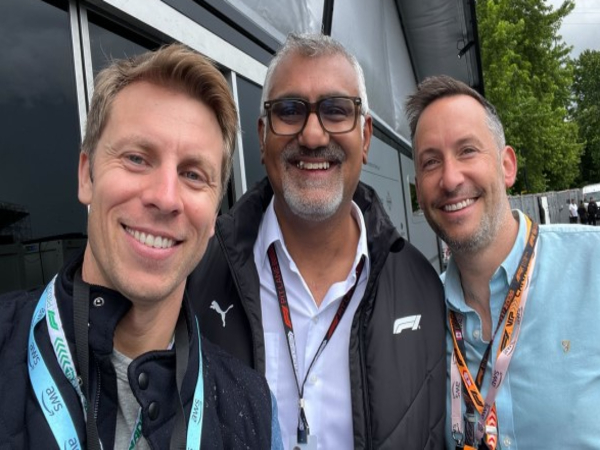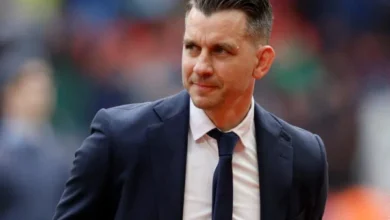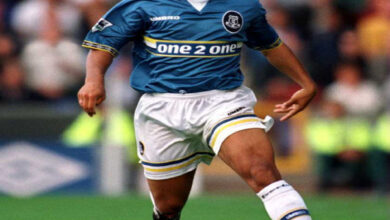Pete Samara: The Visionary Behind Formula 1’s Digital Revolution
Remembering Pete Samara’s Legacy in Transforming F1 Through Innovation, Technology, and Unparalleled Fan Engagement

Pete Samara, the former Director of Innovation and Digital Technology at Formula 1, played a transformative role in shaping the sport’s modern era. Known for pushing boundaries in real-time data, immersive broadcast technology, and global fan connectivity, Samara was the silent powerhouse behind F1’s leap into the digital age. His sudden death on October 19, 2024, left a void in the motorsports world, but his revolutionary contributions continue to impact how fans experience racing today.
Introduction
In the high-octane world of Formula 1, drivers and teams are often in the spotlight. Yet behind the scenes, a select few shape the sport’s future with innovative thinking and technical brilliance. One such figure was Pete Samara. As F1’s Director of Innovation and Digital Technology, Samara redefined how audiences interact with the sport, ensuring fans could experience every tire change, overtake, and championship moment with unparalleled clarity and insight. His passing in 2024 sent ripples across the motorsport industry, but his legacy continues to inspire.
Early Career and Rise Within Formula 1
Pete Samara’s career in Formula 1 began long before he took on the director role. He joined the organization in 2010 as a Research and Development Group Manager, a position that saw him dive deep into the engineering and technology that powered race day logistics. His knack for identifying technological gaps and finding innovative solutions quickly earned him respect among his peers. By 2017, he was promoted to Director of Innovation and Digital Technology, where he began transforming F1 into one of the most digitally advanced sports in the world.
Samara wasn’t just a manager—he was a visionary. He foresaw the potential of merging motorsport with cutting-edge tech. While teams focused on winning races, Samara was focused on enhancing how the world watched them.
Leading F1’s Digital Transformation
Under Samara’s leadership, Formula 1 underwent a seismic shift in how the sport was consumed by audiences. He oversaw the digitization of race coverage, championing real-time telemetry, in-car camera feeds, augmented graphics, and advanced data visualization. He wasn’t just improving broadcasts; he was creating a dynamic, data-rich experience that allowed fans to feel like insiders.
He also modernized F1’s digital platforms. Whether it was the F1 website, mobile app, or streaming service, Samara ensured fans could access live race updates, exclusive video content, and driver insights with just a tap. He reimagined F1 as a digitally immersive sport—a decision that dramatically boosted fan engagement, especially among younger audiences.
Innovation in Broadcasting Technology
One of Samara’s most lasting contributions was his overhaul of F1’s broadcasting infrastructure. He led the integration of helmet cameras, which gave viewers a first-person perspective of the track—something previously considered impossible due to technical constraints. His team also implemented fiber optic solutions to enhance race-day connectivity and data transfer speeds, ensuring smooth and instantaneous broadcast delivery across the globe.
Additionally, Samara introduced next-gen graphics that simplified complex race data, making it easier for both seasoned fans and newcomers to follow. These visuals weren’t just aesthetic upgrades—they were educational tools that brought transparency to the strategic depth of Formula 1 racing.
Enhancing the Fan Experience
Pete Samara believed that fans should be as close to the action as possible, even from thousands of miles away. To that end, he worked on creating a two-way relationship between the sport and its followers. Through real-time app notifications, social media integration, and live Q&As, he broke down the walls between the race track and the audience.
His innovations helped turn F1 from a passive viewing experience into an interactive one. Fans could now follow telemetry data, pit strategies, tire degradation, and more—effectively becoming their own race analysts. This not only deepened fan loyalty but also broadened the sport’s global appeal.
The Mystery Surrounding His Death
On October 19, 2024, just days before the U.S. Grand Prix in Austin, Texas, the motorsport world was shaken by the news of Pete Samara’s sudden and unexpected death. At only 52 years old, his passing left many in shock. The exact cause was not publicly disclosed, adding a layer of mystery and sorrow to the tragedy.
Tributes poured in from around the world. Formula 1 TV hosts wore black armbands, and numerous teams paused to honor the memory of the man who had quietly revolutionized how they engaged with fans. Social media lit up with messages of gratitude, remembrance, and mourning from colleagues, fans, and journalists alike.
Tributes from the Motorsport Community
Formula 1 in Schools, a global STEM competition, acknowledged Pete Samara’s contributions to their cause. He had been a presenter of their Sustainability Award in 2023 and had long supported youth engagement in science and engineering through motorsports.
Globant, one of F1’s tech partners, also shared a heartfelt tribute from CEO Martin Migoya, who praised Samara as “a brilliant mind and a generous spirit.” Migoya emphasized how Samara’s work wasn’t just about tech—it was about making Formula 1 more sustainable, inclusive, and fun for everyone.
Internally, his colleagues remembered him as a mentor and a driving force behind F1’s evolution. He wasn’t someone who sought attention; instead, he let his innovations speak for themselves.
Legacy of a Digital Pioneer
Pete Samara’s impact on Formula 1 is lasting and unmistakable. He pioneered the sport’s shift toward data-driven storytelling and digital transparency. Today, millions of fans around the world experience F1 through the very tools and systems he helped design.
Even after his passing, his innovations continue to influence how teams plan strategies, how fans watch races, and how broadcasters deliver content. His fingerprints are on every lap of every Grand Prix.
In the years to come, as Formula 1 continues to evolve with AI, machine learning, and sustainable tech, Pete Samara’s foundational work will remain essential. He didn’t just change how F1 is watched—he changed how it’s understood.
Inspiring the Next Generation
More than just a tech genius, Samara was a strong advocate for education, diversity, and youth involvement in motorsports. His work with initiatives like F1 in Schools reflected his belief that innovation should be accessible to all.
He often spoke about using technology not just to make F1 better, but to make it more inclusive. He envisioned a future where people from all walks of life could see themselves in the world of racing—not just as fans, but as engineers, broadcasters, strategists, and leaders.
His sudden death may have cut short his career, but it did not stop his influence. Today, many young professionals working in motorsport tech cite Pete Samara as an inspiration.
Conclusion
Pete Samara may not have sat behind the wheel of a Formula 1 car, but his work propelled the sport just as powerfully. His visionary approach to innovation, combined with a deep respect for fans and the essence of racing, made him one of the most influential figures in modern motorsport.
His legacy is visible in every race streamed live, every data graph analyzed by a fan, and every young mind inspired to pursue STEM through motorsport. Though his life was cut tragically short, the ripple effect of his contributions will continue for decades to come.
Pete Samara was more than a director—he was the heartbeat of Formula 1’s digital era.



